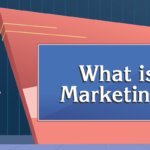As noted earlier, exchange is the origin of marketing activity. When people need to exchange goods, they naturally begin a marketing effort. Wroe Alderson, a leading marketing theorist has pointed out, ‘It seems altogether reasonable to describe the development of exchange as a great invention which helped to start primitive man on the road to civilization’. Production is not meaningful until a system of marketing has been established. An adage goes as: Nothing happens until somebody sells something.
Although marketing has always been a part of business, its importance has varied greatly over the years. The following table identifies five eras in the history of marketing: the production era, the product era, the sales era, the marketing era and the relationship marketing era.
Table; The Evolution Of Marketing

In the production era, the production orientation dominated business philosophy. Indeed business success was often defined solely in terms of production victories. The focus was on production and distribution efficiency. The drive to achieve economies of scale was dominant. The goal was to make the product affordable and available to the buyers. In the product era, the goal was to build a better mouse trap and it was assumed that buyers will flock the seller who does it. However, a better mousetrap is no guarantee of success and marketing history is full of miserable failures despite better mousetrap designs. Inventing the greatest new product is not enough. That product must also solve a perceived marketplace need. Otherwise, even the best-engineered. Highest quality product will fail. In the sales era, firms attempted to match their output to the potential number of customers who would want it. Firms assumed that customers will resist purchasing goods and services not deemed essential and that the task of selling and advertising is to convince them to buy. But selling is only one component of marketing. Next came the marketing era during which the company focus shifted from products and sales to customers’ needs. The marketing concept, a crucial change in management philosophy, can be explained best by the shift from a seller’s market – one with a shortage of goods and services – to a buyer’s market – one with an abundance of goods and services. The advent of a strong buyer’s market created the need for a customer orientation. Companies had to market goods and services, not just produce them. This realization has been identified as the emergence of the marketing concept. The keyword is customer orientation. All facets of the organization must contribute first to assessing and then to satisfying customer needs and wants. The relationship marketing era is a more recent one. Organization’s carried the marketing era’s customer orientation one step further by focusing on establishing and maintaining relationships with both customers and suppliers. This effort represented a major shift from the traditional concept of marketing as a simple exchange between buyer and seller. Relationship marketing, by contrast, involves long-term, value-added relationships developed over time with customers and suppliers. The following table summarizes the differences between transaction marketing (i.e. exchanges characterized by limited communications and little or no ongoing relationship between the parties) and relationship marketing.
Table ; Comparing transaction-based marketing and relationship marketing



